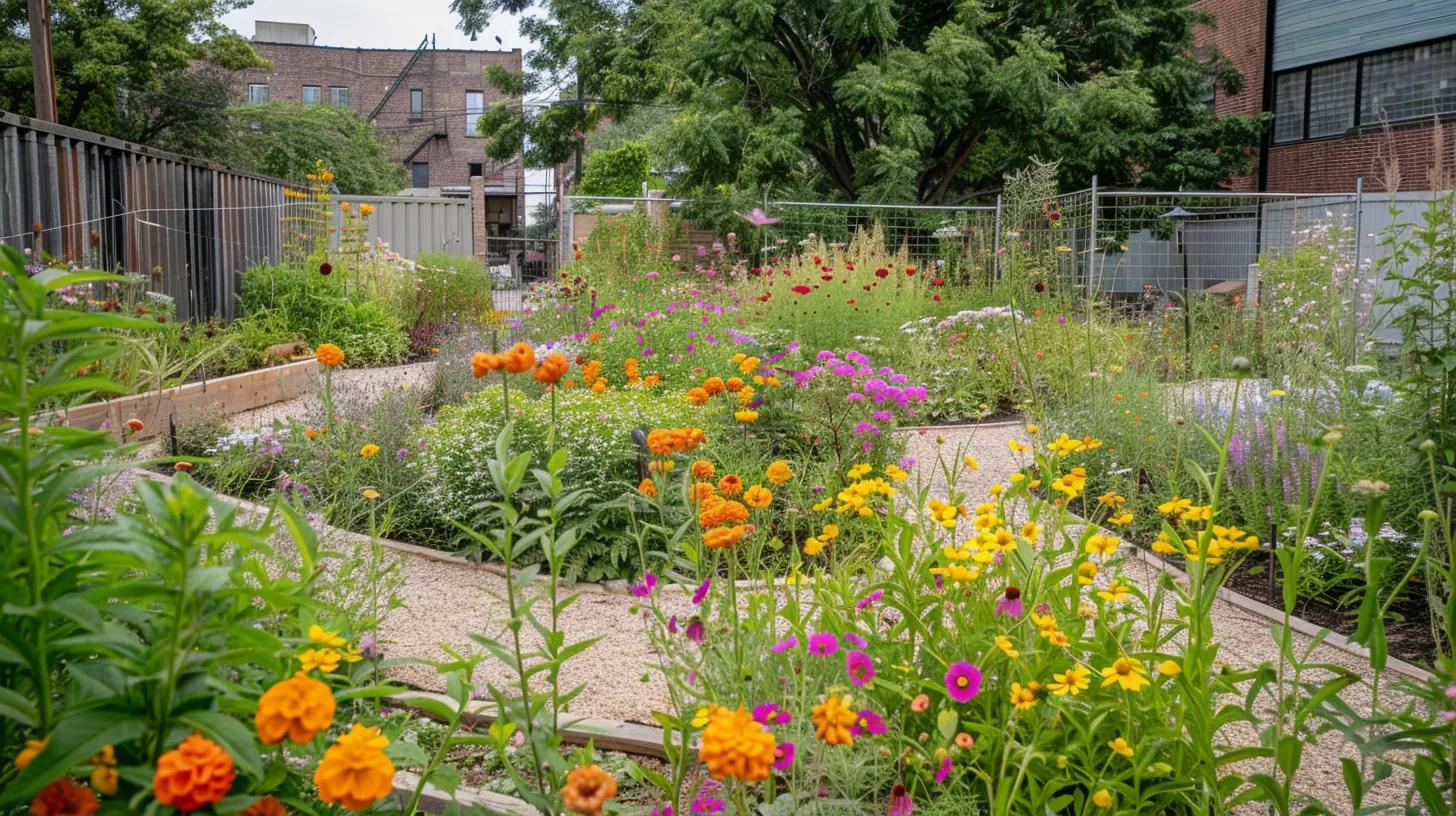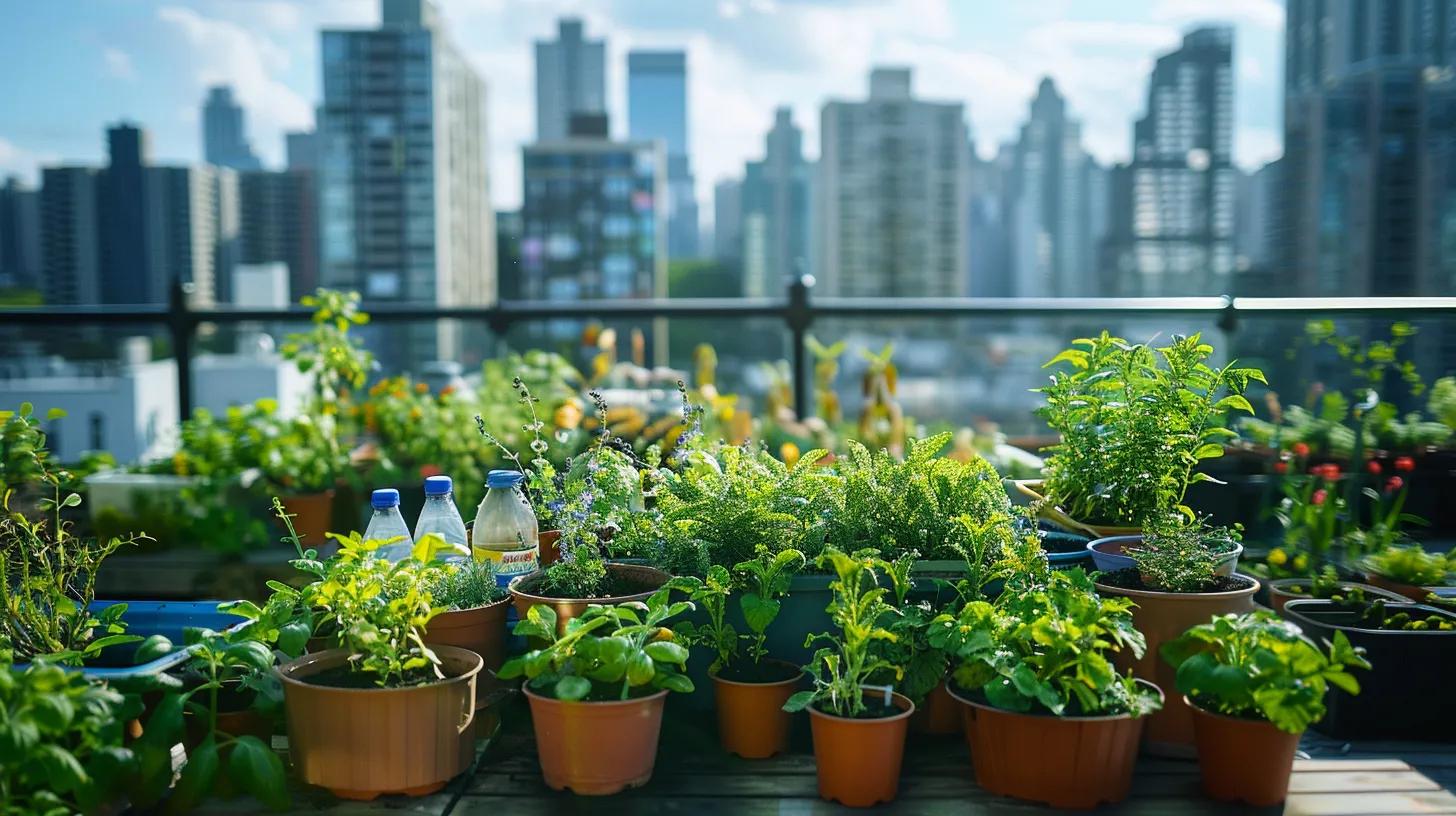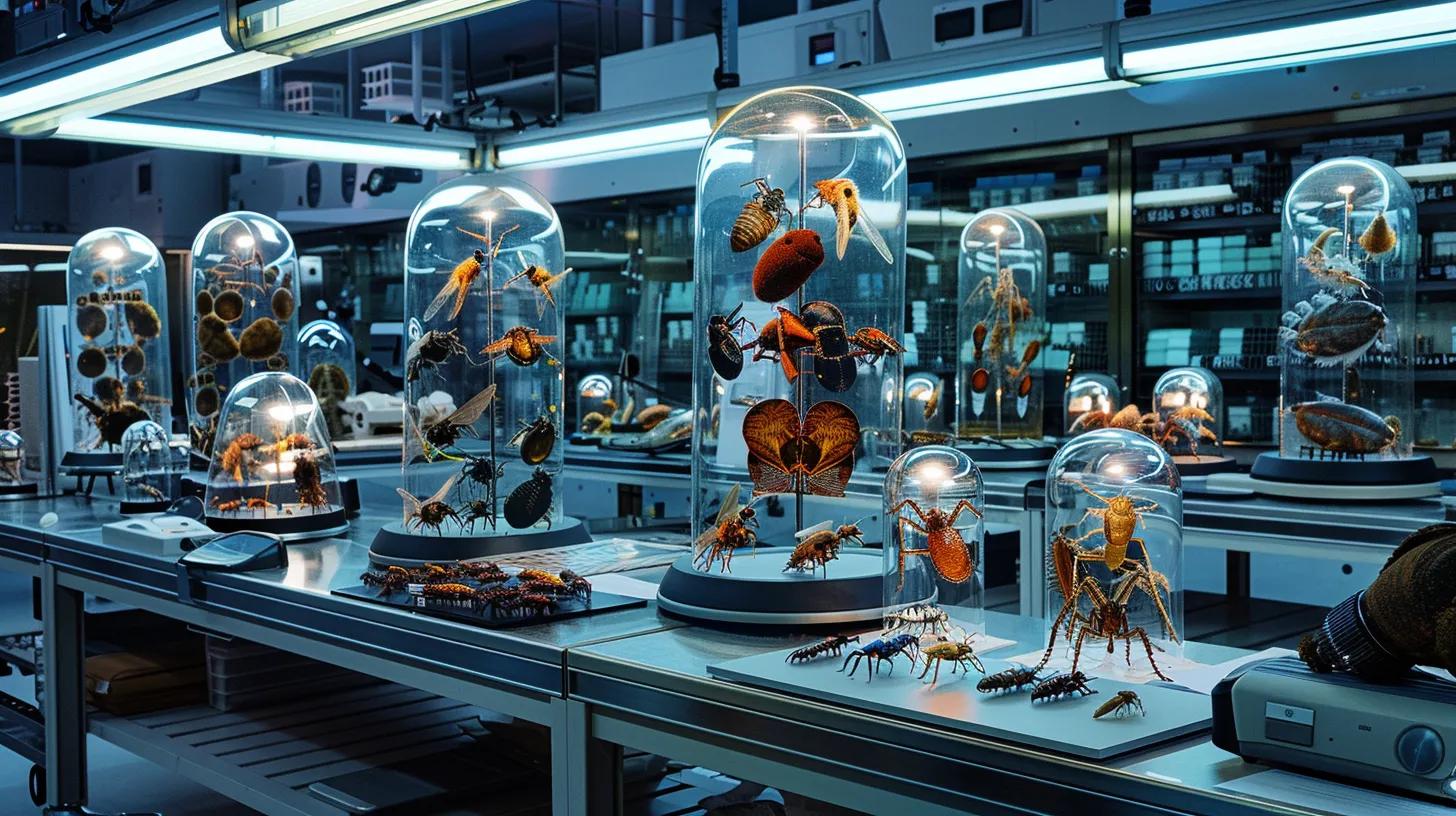How to Distinguish Beneficial Insects From Pests
In modern sustainable agriculture and garden management, knowing how to distinguish beneficial insects from pests is crucial for effective integrated pest management (IPM). Gardeners, landscapers, and agricultural professionals continually face the challenge of protecting plants from damage while preserving the natural enemies that support ecosystem balance. This article offers a comprehensive guide that explains the key differences between beneficial insects and pests, examines their roles within a garden ecosystem, and provides practical tips for identifying, attracting, and managing these insect populations. By understanding the behavioral patterns, feeding habits, habitats, and physical characteristics of common insects, readers will develop a more informed perspective on how to maintain a biodiverse, healthy garden environment.
Beneficial insects include species such as lady beetles, lacewings, and parasitic wasps, which help control populations of plant-damaging insects. On the other hand, pests like aphids, whiteflies, and cucumber beetles can cause significant harm if left unmanaged. The challenge comes from the fact that some insects may fulfill both roles depending on population dynamics and environmental conditions. For instance, a species may occasionally feed on plant sap and be considered a pest, yet its primary ecological function may be to parasitize harmful pests. In addition, some beneficial species may be mistaken for pests because of their size, coloration, or feeding behavior, particularly when natural enemies are less abundant.
This article is organized into several sections, beginning with an explanation of what beneficial insects are, why they are important, and how they can naturally control insect pests. It then explores the methods used to identify common garden pests and the distinct visual and behavioral differences between pests and beneficial insects. The guide continues by detailing strategies to attract beneficial insects to garden habitats through the use of specific plants and cultivation practices. Organic methods for pest control are discussed as alternatives to broad-spectrum chemical pesticides. Finally, the article concludes with an overview of integrated pest management principles and how specific plants can influence both beneficial insect populations and pest outbreaks.
Understanding these concepts is vital not only for preserving the health of any garden or farm but also for promoting sustainable agriculture practices. Let this article serve as your roadmap to balancing insect populations, protecting crops, and harnessing nature’s own pest control mechanisms.
Key Takeaways
- Beneficial insects play a crucial role in natural pest control and overall garden health by preying on or parasitizing pest species.
- Successful identification of beneficial insects versus pests depends on understanding their physical characteristics, behaviors, and habitat preferences.
- Attracting and maintaining populations of beneficial insects can be achieved by incorporating specific plants and organic pest control methods.
- Integrated pest management combines biological, cultural, and chemical methods to sustainably balance pest populations while preserving beneficial species.
What Are Beneficial Insects and Why Are They Important in Your Garden?

Beneficial insects are natural predators, parasitoids, and pollinators that enhance garden health by controlling pest populations and promoting plant growth. Their importance lies in their ability to provide ecosystem services that reduce the reliance on chemical pesticides. Many beneficial insects, such as the honey bee and chrysoperla carnea (green lacewing), perform dual roles: pollinating plants and preying on pests. This dual functionality not only supports the structural integrity of the ecosystem but also drives economic benefits in agricultural settings.
Which Insects Help Control Garden Pests Naturally?
Beneficial insects that naturally control garden pests include species like lady beetles (e.g., Hippodamia convergens) that feed on aphids, and parasitic wasps (e.g., ichneumonidae and braconid wasps) that target caterpillars and whiteflies. For example, paper wasps are known for preying on certain moth larvae, while spider wasps use venom to paralyze harmful spiders that may disrupt the garden’s ecological balance. In addition, predators such as ground beetles actively hunt soil-dwelling pest species, and hoverflies (syrphidae) lay eggs near aphid colonies so that their larvae feed on these sap-sucking insects. These insects collectively reduce pest populations by various modes, including direct predation, parasitism, and disrupting the pest life cycle. Their activity forms the foundation of biological pest control in organic and sustainable pest management practices.
How Do Beneficial Insects Support a Healthy Garden Ecosystem?
Beneficial insects support a healthy garden ecosystem by maintaining the balance between pest populations and plant vigor. They contribute to natural pest suppression, reduce plant stress, and promote biodiversity. For instance, pollinators such as honey bees and native bees improve fruit set, while parasitoids like tachinid flies limit the growth of pest populations that might otherwise lead to severe crop damage. Additionally, beneficial insects help recycle nutrients by breaking down organic matter and contributing to soil fertility. Their interactions with plants sometimes include stimulating systemic resistance, a phenomenon where plants are primed to react more robustly to future pest attacks. With fewer pest outbreaks, gardeners can maintain a more chemical-free approach to plant care, further enhancing the resilience of the ecosystem.
What Are the Key Characteristics of Beneficial Insects?
Beneficial insects are characterized by their targeted feeding habits, preference for pest species, and roles in pollination and nutrient cycling. Physically, they often have distinct markings that differentiate them from pests; for instance, the lady beetle’s red and black coloration serves as a warning of its unpalatable taste to predators. Behaviorally, many beneficial insects are solitary hunters or operate in small groups, contrasting with the swarm behavior seen in pests like whiteflies. Their life cycles are tightly linked with the presence of their prey, and they typically have a low reproductive rate compared to pest species, which makes them more vulnerable to environmental changes if their habitat is disrupted. In summary, beneficial insects possess adaptations that allow them to perform essential ecological functions without causing undue harm to plants, thereby reinforcing the garden’s overall health.
How Can You Identify Common Garden Pests Effectively?
Correctly identifying common garden pests is pivotal for implementing tailored control measures. Garden pests typically have life stages that include eggs, larvae or nymphs, pupae, and adults, and these stages often exhibit identifiable physical features distinct from those of beneficial insects. Through careful observation and monitoring, gardeners can recognize signs of pest damage such as leaf spotting, stunted growth, and presence of frass (insect droppings).
What Are the Most Common Garden Pests to Watch For?
Among the most common garden pests are aphids, whiteflies, cucumber beetles, and scale insects. Aphids, known for their small size and rapid reproduction rate, cluster on the undersides of leaves and excrete honeydew, which leads to sooty mold growth. Whiteflies, which feed on plant sap, are often found on the leaves of ornamentals and vegetables, causing yellowing and wilting. Cucumber beetles are notorious for damaging a variety of cucurbits by feeding on leaves and fruits, while scale insects adhere permanently to stems and leaves, sucking plant juices and transmitting diseases. Recognizing these pests early on—with the help of magnification tools or field guides—can inform timely interventions such as mechanical removal or application of organic insecticides.
How Do Garden Pests Damage Plants?
Garden pests damage plants through direct feeding and indirect actions such as vectoring diseases. For example, aphids damage leaves by piercing plant tissues, which reduces photosynthetic capacity and stunts growth. In some cases, the damage is exacerbated by the pathogens these pests spread. Whiteflies not only weaken plants through sap extraction but also facilitate fungal or viral infections due to the honeydew they produce. Similarly, scale insects create localized necrosis, which can reduce the overall vigor of the plant. The physical bite marks, discoloration, and distorted growth patterns highlight how pest infestations can lead to reduced yields and discolored foliage. By effectively identifying these specific types of damage, gardeners can employ corrective actions promptly to prevent further deterioration.
What Are the Visual Differences Between Pests and Beneficial Insects?
Visual differences between pests and beneficial insects hinge on physical traits such as body shape, coloration, and morphological features. Beneficial insects, like the chrysoperla carnea (green lacewing), are typically slender, with delicate wings and light body coloring that contrasts sharply with the darker, more robust appearance of many pest species. For instance, while many scale insects appear as small, immobile bumps on plant stems, beneficial insects like predatory mites are more active and mobile. Another key observation is the behavior at the feeding site; pests such as aphids often aggregate in large numbers, forming clusters on the underside of leaves, whereas beneficial insects are more evenly distributed throughout the plant canopy. Additionally, some pests have adaptations like hard shells or waxy coatings to deter predation, which benefitting insects generally do not require given their role as predators. Paying close attention to these distinctions enables an accurate differentiation, paving the way for more targeted and effective pest management strategies.
What Are the Key Differences Between Beneficial Insects and Pests?

The distinction between beneficial insects and pests rests on their feeding habits, behaviors, and impact on plant health. Beneficial insects primarily act to control pest populations and pollinate plants while maintaining a balance that supports overall ecosystem health. In contrast, pests typically feed on plant tissues or sap, resulting in cellular damage, reduced plant vigor, and potential transmission of diseases. The interplay between the two sets of insects is a central focus of integrated pest management, where understanding these functional roles aids in developing sustainable control measures.
How Do Feeding Habits Distinguish Beneficial Insects From Pests?
Feeding habits are among the most significant factors in differentiating beneficial insects from pests. Beneficial insects tend to feed on other insects or on nectar and pollen, thereby contributing to biological control. For instance, parasitoid wasps and lady beetles feed on pest species like aphids, reducing their numbers naturally without harming the host plant. In contrast, pests such as cucumber beetles or scale insects directly consume plant materials, often causing major structural damage. These pests can siphon off vital nutrients essential for plant growth, thereby impairing photosynthesis and impairing overall plant health. By carefully observing feeding behavior—such as the target of the insect’s feeding or the presence of specialized mouthparts—gardeners can typically identify whether an insect is likely a pest or a beneficial species. In many instances, the use of magnification or detailed field guides can clarify these distinctions and improve the accuracy of on-site insect identification.
How Can Behavior and Habitat Help Identify Insects?
Behavioral traits and habitat preferences are also key factors in determining whether an insect benefits or harms a garden. Beneficial insects often inhabit areas rich in flowering plants, hedgerows, and undisturbed soil that provide ample food sources and nesting opportunities. For example, ground beetles and hoverflies are commonly found in moist, shaded areas where they can easily locate prey. Conversely, pests might thrive in isolated or stressed environments where plants are more vulnerable. Some pests, like the whitefly, tend to congregate on stressed plants with nutrient deficiencies. Behaviorally, beneficial insects are typically more mobile and exhibit territorial foraging patterns, whereas pest species often exhibit swarm behavior or remain in large, sedentary groups. By examining where insects are most prevalent and how they interact with the surrounding environment, it becomes easier to implement targeted control measures while simultaneously promoting the habitat of beneficial insects.
What Visual Identification Tips Help Differentiate Insects?
Visual identification of insects requires attention to size, shape, color, and anatomical features. Beneficial insects might have distinguishing traits such as transparent wings, delicate body structures, or brightly colored markings that are used to signal unpalatability. For example, the distinctive red and black spots of a lady beetle can be quickly recognized in contrast to the dull, uniform coloration of many invasive pest species. Additionally, recognizing the wing patterns, the structure of the antennae, and the segmentation of the body can provide clues. Tools like macro photography and field guides can enhance these visual assessments. Detailed observation of leg positions, body posture, and movement resembles an art that categorizes whether an insect’s form is adapted for predation or feeding on plant tissues. Such careful observation, paired with knowledge of local species, forms the backbone of effective entomological monitoring in a garden.
How Do You Attract Beneficial Insects to Your Garden?
Attracting beneficial insects to the garden requires creating an inviting environment that meets their nutritional and habitat needs. Gardens that are rich in biodiversity and include a variety of flowering plants, herbs, and native species are preferred by these insects. Many beneficial insects rely on nectar, pollen, and shelter provided by certain plants, which in turn supports their role as natural pest controllers. Gardeners can foster beneficial insect populations by carefully selecting plant species known to attract them and avoiding the excessive use of chemical pesticides that can disrupt their populations.
Which Plants Are Best for Attracting Beneficial Insects?
A wide range of plants are proven to attract beneficial insects. Commonly recommended species include dill, coreopsis, and lobularia maritima, all of which exude nectar-rich flowers that lure predatory species like lacewings and parasitic wasps. Additionally, plants such as allium and garlic release compounds that repel pests while simultaneously attracting natural predators. Native flowering plants and herbs, including dill, fennel, and coriander, can support the entire life cycle of beneficial insects by providing sources of nectar and pollen throughout different seasons. Integrating a mix of annuals and perennials ensures year-round attraction, thereby stabilizing insect populations essential for natural pest control.
How Can You Create Habitats That Support Beneficial Insects?
Creating habitat structures that support beneficial insects involves more than planting attractive flora; it also requires attention to structural elements that offer shelter, breeding grounds, and overwintering sites. Providing undisturbed patches of soil, installing small water sources like shallow dishes with pebbles, and leaving dead wood or compost piles in a corner of the garden can offer essential refuges for insects during inclement weather. Additionally, incorporating hedgerows or native grasses can create windbreaks and microhabitats that facilitate the persistence of beneficial insect species. These methods complement the attraction of insects by creating an environment where they can reproduce and thrive. Throughout the growing season, ensuring that these habitats remain undisturbed and only minimally treated with chemicals guarantees a robust population of beneficial insects.
What Gardening Practices Encourage Beneficial Insect Populations?
Sustainable gardening practices play a critical role in encouraging beneficial insect populations. Reduced tillage, organic composting, and the avoidance of synthetic pesticides contribute to a healthier garden ecosystem by preserving the natural enemies of pests. Crop rotation and intercropping, for instance, help create diverse environments that reduce pest outbreaks while promoting the availability of hosts for beneficial insects. Additionally, implementing cover crops and maintaining mulched areas not only improves soil health but also provides sustaining resources for non-flying insects and ground-dwelling species. Such practices ensure that the garden remains a balanced ecosystem, where beneficial insects can control pest populations effectively without the need for harmful chemicals.
What Are Organic Methods to Control Garden Pests Safely?

Organic pest control methods provide safe alternatives to chemical pesticides by utilizing natural substances and techniques to regulate pest populations. These methods aim to minimize harm to beneficial insects and the environment while suppressing pest populations through targeted interventions. Organic approaches incorporate both preventive measures, such as habitat enhancement for natural enemies, and curative methods, including botanical extracts like neem oil and insecticidal soap. The principles underpinning organic pest control emphasize prevention through cultural practices, biological control, and the use of naturally derived substances, ensuring the long-term health of the garden ecosystem.
How Does Insecticidal Soap Work Against Common Pests?
Insecticidal soap functions by disrupting the cell membranes of soft-bodied insects, leading to dehydration and eventual death. Formulated from fatty acids, these soaps are particularly effective against pests such as aphids, mealybugs, thrips, and whiteflies. They work by penetrating the insect’s outer coat and breaking down essential cellular structures without leaving harmful chemical residues. This method is relatively safe for beneficial insects when applied carefully and in appropriate concentrations. The quick action of insecticidal soap minimizes further pest reproduction and spreads while allowing beneficial insects, typically less exposed due to their habitat preferences, to continue their role in natural pest control.
What Are the Benefits of Neem Oil for Pest Management?
Neem oil is a powerful, natural pesticide derived from the seeds of the neem tree. It contains active ingredients such as azadirachtin, which interfere with the hormonal systems of pests, thereby reducing their feeding, mating, and growth. This mode of action effectively disrupts the life cycles of various pests, including scale insects, whiteflies, and spider mites, without the detrimental effects associated with synthetic pesticides. Neem oil is broad-spectrum yet has a reduced impact on beneficial insects when applied during the early morning or late evening. Its biodegradability and safety profile make it an ideal choice for gardeners seeking to manage pest populations organically.
How Can Sticky Traps and Row Covers Help Manage Pests?
Sticky traps and row covers are physical control methods that can serve as excellent options for managing garden pests organically. Sticky traps, typically coated with a non-drying adhesive, capture flying pests such as whiteflies, aphids, and thrips, thereby reducing their populations immediately. These traps also facilitate monitoring by providing a visual count of pests captured over time, aiding in more timely interventions. Row covers, on the other hand, serve as physical barriers that prevent pests like cucumber beetles and moths from reaching plants. By allowing light and water to penetrate, row covers provide protection without compromising plant health. The combined use of these tools can substantially reduce pest numbers while maintaining an environment conducive to beneficial insect activity.
How Does Integrated Pest Management (IPM) Help Balance Beneficial Insects and Pests?
Integrated pest management (IPM) is a comprehensive approach that seeks to balance pest control with environmental conservation by combining various control methods. The heart of IPM lies in its focus on prevention, monitoring, and the use of a combination of biological, cultural, and, when absolutely necessary, chemical controls. This approach recognizes that pests cannot be eradicated entirely, but their populations can be managed to acceptable levels while preserving or even enhancing the populations of beneficial insects. By implementing IPM, gardeners can minimize the disruption of natural systems and reduce the dependency on synthetic pesticides, ultimately fostering a more resilient and balanced ecosystem.
What Is Integrated Pest Management and Why Is It Effective?
Integrated pest management is an adaptive framework that combines multiple strategies to manage pest populations responsibly. At the core of IPM is the principle of monitoring and threshold-based interventions; actions are taken only when pest populations reach levels that are likely to cause economic or aesthetic damage. IPM is effective because it integrates biological controls—such as the release or conservation of beneficial insects—with cultural practices like crop rotation and sanitation. This multi-pronged approach lowers the risk of pest resistance, minimizes environmental impact, and fosters a balanced ecosystem by ensuring that beneficial predators are not harmed by blanket pesticide applications. Its emphasis on data-driven decision-making makes it a proven and sustainable method for long-term pest control.
How Does Monitoring Help Identify Beneficial Insects and Pests?
Monitoring is a critical component of integrated pest management that involves regular observation and documentation of the insect populations present in a garden. Through systematic monitoring, gardeners can identify early signs of pest infestations and recognize which beneficial species are active. This practice often includes the use of visual inspections, sweep netting, sticky traps, and even digital monitoring tools to document insect activity accurately. By collecting data on insect numbers, life stages, and behavior, gardeners can make informed decisions about when and how to intervene. Effective monitoring ensures that control measures are applied judiciously and only when necessary, preserving the delicate balance between beneficial insects and pests while optimizing overall plant health.
How Can You Combine Cultural, Biological, and Chemical Controls Safely?
Combining cultural, biological, and chemical controls within an integrated pest management program allows gardeners to target pests in a layered, strategic manner. Cultural controls include practices like crop rotation, proper spacing, and sanitation, which help reduce pest habitats and lifecycle success. Biological controls involve the use of natural enemies, such as parasitic wasps and predatory beetles, to control pest populations. When chemical interventions are necessary, they should be chosen based on specificity and low toxicity, such as insecticidal soaps or neem oil, and applied sparingly to avoid harming beneficial insects. This balanced combination ensures effective pest management while promoting environmental sustainability, maintaining biodiversity, and supporting healthy, thriving plant systems.
How Do Specific Plants Influence Beneficial Insects and Pest Populations?

Plants exert a significant influence on the populations of both beneficial insects and pests through their chemical composition, physical structure, and flowering patterns. Certain plants, through the production of nectar, pollen, and volatile organic compounds, act as attractants for beneficial insects. By contrast, other plants may attract pests with their nutrient content or by emitting chemical signals that draw herbivorous insects. Recognizing which plants help foster beneficial insect populations and which may inadvertently encourage pests is essential for curating a balanced garden ecosystem. This section details specific plant examples—ranging from ornamental roses to vegetable crops like tomatoes and peppers—along with the insects they most commonly attract or repel.
What Beneficial Insects and Pests Are Common on Roses?
Roses are not only prized for their beauty but also host a variety of insect species. Beneficial insects such as lady beetles and parasitic wasps are often found on rose bushes, where they help control aphids and other sap-sucking pests. At the same time, roses may attract whiteflies and thrips that can cause significant damage if left unchecked. The complex chemical profile of roses, which includes compounds that can confuse or repel pests, is balanced by the availability of sweet nectar that benefits pollinators. Gardeners can mitigate potential pest issues by regular monitoring and by encouraging the presence of natural enemies that keep pest populations under control. This dual interaction underscores the importance of recognizing the plant–insect relationship in cultivated landscapes.
How to Manage Pests and Attract Beneficial Insects on Tomatoes?
Tomato plants are frequently the target of pests like the tomato hornworm, aphids, and whiteflies. However, by employing habitat management techniques, gardeners can enhance the presence of beneficial insects such as hoverflies and predatory beetles that feed on these pests. Interplanting tomatoes with aromatic herbs like basil and dill may help deter some pests while simultaneously attracting beneficial predators. Mulching and careful watering techniques prevent fungal diseases and reduce pest harborage sites. Implementing organic matter and conserving ground cover further encourages populations of soil-dwelling beneficial insects that support overall plant health. Such culturally sensitive practices pave the way for successful, integrated management of the tomato crop.
Which Insects Affect Peppers and How to Distinguish Them?
Peppers are susceptible to infestation by a range of insects including aphids, whiteflies, and thrips. Distinguishing between pest and beneficial insects on peppers involves close observation of behavior and physical characteristics. While pests often appear in dense clusters on the undersides of leaves, beneficial predators like minute pirate bugs (anthocoridae) typically exhibit rapid, solitary movements and are less abundant. Morphologically, pests such as aphids have soft, pear-shaped bodies and cluster closely on plant tissues, whereas beneficial insects tend to have more streamlined forms and are equipped with adaptations for predation. By evaluating these differences, gardeners can implement targeted interventions such as the introduction of natural enemies or selective organic insecticides to manage infestations without harming beneficial species. Regular scouting of pepper plants will help ensure early detection and prompt action.
How Do Herbs Support Beneficial Insects and Resist Pests?
Herbs play a dual role in garden ecosystems by serving both as a source of nourishment for beneficial insects and as a deterrent to pest species. Aromatic herbs such as dill, coriander, and garlic release volatile compounds that attract natural enemies like parasitic wasps and lady beetles, while simultaneously repelling pests through their strong scents. These herbs not only provide nectar and pollen during their flowering phases but also create microhabitats that support various beneficial insect species. For example, dill and coriander are known to entice hoverflies and lacewings, which help to keep aphid populations in check. Additionally, herbs can enhance soil health through their organic matter, contributing to an overall balanced ecosystem. This harmonious interaction between herbs and insects ultimately supports more resilient garden systems and reduces the need for chemical pest control.
Frequently Asked Questions
Q: What are the primary roles of beneficial insects in a garden ecosystem? A: Beneficial insects act as natural predators and parasitoids that help control pest populations while also functioning as pollinators. Their activities reduce the dependency on chemical pesticides, support plant health, and promote a balanced ecosystem. By preying on harmful pest species, they ensure that plants are less stressed and more productive.
Q: How can a gardener differentiate between a pest and a beneficial insect just by looking at them? A: Visual identification relies on observing physical traits such as body shape, coloration, and wing structure. For instance, beneficial insects like lady beetles often feature distinctive red and black patterns, while many pests have muted colors that blend with plant surfaces. Behavior such as solitary versus swarming movements and the location on the plant can also provide clues; beneficial insects tend to forage individually rather than in clusters.
Q: What organic methods are most effective for controlling pests without harming beneficial insects? A: Organic methods include the use of insecticidal soap, neem oil, sticky traps, and physical barriers like row covers. Insecticidal soap and neem oil target soft-bodied pests by disrupting their cell membranes and hormonal systems without significantly affecting most beneficial insects when used correctly. Sticky traps help monitor and reduce flying pests, complementing physical barriers that prevent pests from reaching the plants.
Q: How do specific garden plants encourage the presence of beneficial insects? A: Certain plants, especially those with nectar-rich flowers and aromatic herbs, create microhabitats attractive to beneficial insects. Plants like dill, coriander, and lobularia maritima provide necessary food sources—nectar and pollen—that beneficial insects rely on for energy and reproduction. Additionally, these plants often emit scents that deter pests while attracting natural predators, thereby enhancing the garden’s overall insect biodiversity.
Q: Why is integrated pest management (IPM) considered a sustainable approach to controlling pests? A: IPM combines biological, cultural, and chemical methods to manage pest populations responsibly. By emphasizing prevention through habitat manipulation, regular monitoring, and the selective use of low-toxicity treatments, IPM reduces the need for broad-spectrum pesticide applications. This integrated strategy not only preserves beneficial insect populations but also minimizes environmental impact and promotes longer-term agricultural sustainability.
Q: Can habitat modifications in a garden really impact insect populations significantly? A: Yes, habitat modifications such as adding hedgerows, native flowering plants, and water sources create the necessary environmental conditions that support beneficial insect populations. These changes increase the availability of natural resources, provide shelter, and encourage diverse insect communities. Consequently, a well-structured habitat can lead to more effective natural pest control and improved plant health.
Q: How can gardeners monitor insect populations effectively to apply timely pest management practices? A: Gardeners can monitor insect populations by using a combination of visual inspections, sticky traps, and field guides. Regularly checking the undersides of leaves and plant stems for insect activity provides immediate insights into pest pressure. Sticky traps offer quantifiable data by capturing flying insects, while digital tools and local workshops can augment traditional monitoring methods. These practices help in making informed decisions about when to intervene and which control methods to apply.
Final Thoughts
Beneficial insects and pests form a complex network that influences garden health. By understanding their differences in feeding habits, behavior, and habitat needs, gardeners can optimize their management practices to maintain a balanced ecosystem. Integrated pest management encourages the use of organic, sustainable methods that bolster beneficial insect activity while keeping pests under control. Adopting these practices not only preserves biodiversity but also promotes a thriving, resilient garden that supports sustainable agriculture and long-term plant health.

17 Years of Pest Control Experience Founder and Owner of Dade Pest Solutions Proud Resident of South Florida
Shaun Judy, a dedicated South Florida native, is the founder and driving force behind Dade Pest Solutions. With over 17 years of hands-on experience in the pest control industry, Shaun has built a reputation for reliability, results, and real local knowledge. His journey began with a deep commitment to protecting homes from pests using proven methods and innovative solutions. Raised with a strong work ethic and a passion for service, Shaun treats every property as if it were his own—delivering expert care with a personal touch.

